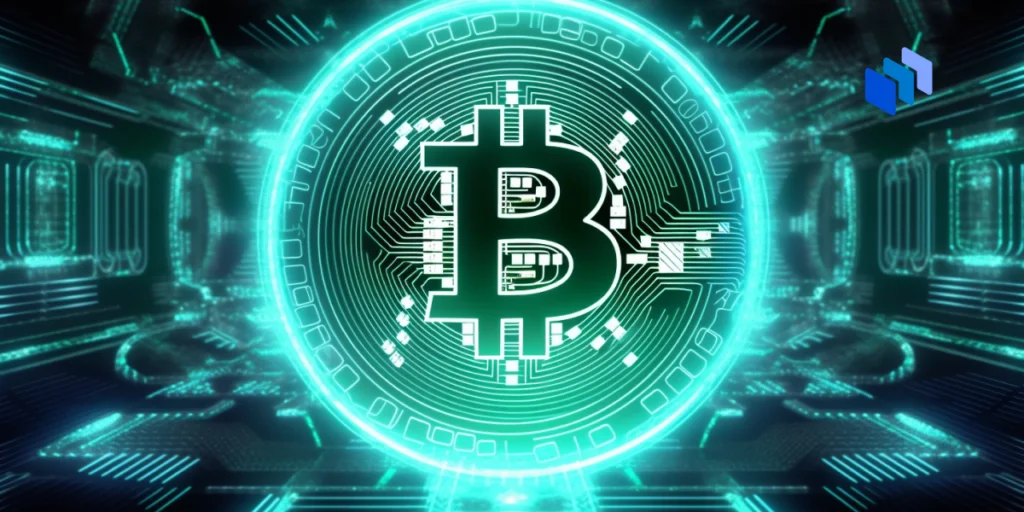What is Bitcoin (BTC)?
Bitcoin (BTC) is a decentralized digital currency, first developed by a mysterious creator named Satoshi Nakamoto in 2009. It’s also called cryptocurrency because transactions are secured and verified using a scientific method to encode and decode data called cryptography. These transactions are distributed and stored on computers all around the world in a distributed ledger technology called blockchain.
It’s the first and most valuable kind of emerging asset class. Blockchain miners get Bitcoin as a reward for verifying transactions and can be purchased, owned, stored, and traded on several exchanges.
Since the inception of Bitcoin, its popularity has soared exponentially and inspired others to create different cryptocurrencies either to replace BTC as a payment system or use it as utility or security tokens.
Once BTC was sold for under $100 after it was launched but as of 19 January 2024, 1 BTC equals $41,119.80. It has a limited supply of 21 million coins and hence many investors consider it as digital gold and believe its price will only keep rising. As of today, more than 19 million Bitcoins are in circulation.
Let’s learn how Bitcoin came into existence – Bitcoin history, how Bitcoin works, how to mine, use, store, and where to buy it.
How Does Bitcoin Work?
Bitcoin is a decentralized digital currency, unlike credit card networks like Visa and payment processors Paypal. As discussed above it is built on global distributed ledger technology called blockchain. It is the world’s first decentralized digital payment system that is not operated or owned by any third party owners and everyone can participate in it with an internet connection.
The most crucial element of Bitcoin is blockchain technology. As the name suggests, a blockchain is a linked chain of data. Each unit of the block contains transaction information like date and time, total value, buyer and seller, and a unique identifying code for each exchange. Each last block contains the address of the next block creating a chain hence the name blockchain.
A Bitcoin is a digital asset that can be bought and traded via cryptocurrency exchange or stored in a digital wallet. The smallest unit of Bitcoin is known as Satoshi and each Satoshi is equal to a hundred millionth of a one BTC
To own a Bitcoin a user has to have access to a digital wallet. A digital wallet is protected by a public key and a private key to digitally sign transactions to securely transfer ownership from one user to another.
Before owning Bitcoin, someone has to mine it. In simple terms, Bitcoin mining is the process of using computer hardware to perform complex mathematical computations for the Bitcoin network to confirm each subsequent transaction to increase security.
Bitcoin’s Blockchain Technology
Bitcoin as a digital currency is easy to understand. Like if you are using someone’s services, then you can pay them as Bitcoin. But when it comes to how Bitcoin works, it becomes super complex.
Blockchain
Bitcoin has a network of blockchain. A blockchain is a distributed ledger across the entire planet to share and store transaction data. Data within each of these blocks are encrypted with strong encryption algorithms.
Encryption
Bitcoin blockchain network uses the SHA-256 hashing algorithm to encrypt data stored in its block. In simple language, the data stored in each of the blocks are encrypted into a 256-bit hexadecimal number. This number contains all the information regarding the last and next transaction forming a chain and impossible for outsiders to hack into it.
How is Bitcoin Created?
A Bitcoin is automatically created in the Bitcoin blockchain network once a miner finds and adds a new block of data to the blockchain. However, it is a complex computational process that requires computer hardware and an enormous amount of electricity. In Bitcoin mining, miners play a pivotal role in verifying and validating transactions of each new block across the Bitcoin network to keep it up and running.
What is Bitcoin Mining?
As discussed above, Bitcoin mining is a complex computational process to validate transactions over the Bitcoin network. People who are involved in the mining process are known as bitcoin miners. And after validating each block, the miners get rewards in Bitcoin.
But why is it called Bitcoin Mining? Bitcoin has a limited supply of 21 million coins like physical resources, eg: gold, and petroleum. The process of mining requires energy to generate new coins.
The following are the top three purposes of Bitcoin mining:
- Validate ongoing transactions and generate new Bitcoins for circulation
- Examine double-spend and counterfeiting
- Maintain the ledger as decentralized
How Does Bitcoin Mining Work?
You need three things to start bitcoin mining: A Digital Wallet, Mining Software, and Computer Equipment.
Digital Wallet: A digital wallet is an online account for you to store, transfer, and accept cryptocurrencies like Bitcoin. This is the wallet where you can store your Bitcoin rewards after completing mining efforts. Some companies that offer secure digital wallets are Coinbase, Trezor, Exodus, etc.
Mining Software: Many companies provide Bitcoin mining software for Windows, macOS, and Linux. You can start mining Bitcoin after integrating the mining software with the computer hardware. Some Bitcoin mining software are CGMiner, BFGMiner, MultiMiner, and Awesome Miner.
Computer Equipment: Bitcoin mining is not a cost-effective operation. You’ll need powerful computers, expensive hardware, and an enormous amount of electricity to successfully mine Bitcoin.
Types of Bitcoin Mining
There are several ways to mine Bitcoin. Here are a few of them:
- CPU Mining: After Bitcoin was launched in 2009, the first Bitcoin was mined via a Central processing unit. Bitcoin was at the infant stage and there were fewer miners so it was easy to mine Bitcoin using a CPU. But gradually, the mining required to solve complex computations and CPUs wasn’t enough to mine Bitcoin.
- GPU Mining: As Bitcoin became popular and widely accepted, competition among miners to solve the computations also increased, thus graphics processing units (GPU) came into the picture. The first GPU mining was launched in 2010 with a better hash rate and efficient mining than CPUs. However, within the next five years, ASIC mining replaced GPU mining.
- ASIC Mining: Application-specific integrated circuit (ASIC) is a hardware solution to mine cryptocurrencies only. It was launched in 2012 and is 200 times more powerful than basic GPU mining. However, ASIC mining equipments are expensive with prices ranging from $2,000 to $15,000. It also consumes a high amount of electricity making it unfeasible for individual miners.
- FPGA Mining: The full form of FPGA is field-programmable gate array. It’s a better option to choose between GPU and ASIC mining and also offers better speed and cost-efficiency.
- Cloud Mining: This is the latest technology to mine Bitcoin without the need for expensive hardware and maintenance. Here, a miner can buy a cloud mining service from a cloud mining provider specializing in cryptocurrency mining rigs. However, a miner has to be aware of any kind of online phishing or scam while choosing cloud mining providers.
Useful Bitcoin mining statistics
- As of November 2023, a miner earns 6.25 Bitcoin (roughly $227,500) for successfully validating a new block on Bitcoin Blockchain.
- According to the Cambridge Bitcoin Electricity Consumption Index, per year Bitcoin network consumes 147 terawatt-hours of electricity, equivalent to what the Netherlands consumes each year.
- In November 2021, Bitcoin reached an all-time high of $68,790.
- according to the Cambridge Electricity Consumption Index, the top three bitcoin miners are The United States (37.4%), Mainland China (18.1%), and Kazakhstan (14.0%).
How to Buy Bitcoin?
You can buy Bitcoin through cryptocurrency exchanges. The exchanges are a platform that helps you to buy, store, transfer, and hold Bitcoin and other cryptocurrencies. You can choose a cryptocurrency exchange of your choice, set up your account by sharing and verifying your personal and banking data with the platform, and transfer fiat money into the account to buy Bitcoin and other cryptocurrencies.
If you buy Bitcoin, you need to store it in a digital wallet. There are two types of wallets to store Bitcoin:
- Hot Wallet: All the cryptocurrency exchanges offer you to store Bitcoin on their platform. However, other digital wallet providers offer to store Bitcoin with better security. These hot wallets can be accessed through any browser on a desktop or smartphone.
- Cold Wallet: A cold wallet is a portable device with high-quality encryption to download and store your Bitcoin. A cold wallet offers high security since they aren’t connected to the internet.
The core difference between a hot and cold wallet is that a hot wallet is constantly connected to the internet and cold wallets aren’t. But even then, you will need a hot wallet to download and store your Bitcoins in a portable cold wallet.
5 Best Bitcoin Wallet for You
- Coinbase Wallet
Coinbase, the largest cryptocurrency exchange in the world developed the Coinbase Wallet desktop app, mobile app, and a browser extension. It has a user-friendly interface and is beginner-friendly with easy navigation. It supports Bitcoin and 100,000+ digital assets. It offers high security with multi-signature and two-factor authentication. It also offers biometric authentication like FaceID and TouchID. Users can directly buy Bitcoin from Coinbase to easily store, hold, transfer, and sell Bitcoin.
- TrustWallet
Binance is a cryptocurrency exchange that developed TrustsWallet. It supports dApps, NFTs, crypto assets, and 70+ blockchains. It is another best Bitcoin wallets with an easy-to-use and simple user interface. It is one of the highest-rated Bitcoin wallets on both App Store and Play Store. It also has a built-in web3 browser to access dApps and blockchain games. It also makes buying NFTs easy in a decentralized manner.
- BlueWallet
BlueWallet is one of the best Bitcoin wallets for mobile. It has rich features, a modern design, and an intuitive user interface that easily integrates with Lightning Network. It supports multiple wallets with multi-signature vaults for the highest security. It supports 30+ currencies like USD, AUD, BRL, CAD, CHF, CZK, and more. It also helps the users to control the transaction fees and offers real-time notifications of every transaction.
- Crypto.com
Crypto.com offers decentralized finance tools, multiple security layers, and supports 250+ cryptocurrencies. It has 80 million+ users and is one of the best Bitcoin wallets in existence. You can trade with 20+ fiat currencies with price alerts and options of recurring buy. This wallet gives complete control over Bitcoin and other cryptocurrency assets with real-time bank transfers.
- Electrum
Electrum supports only one asset: Bitcoin. It lacks altcoin offerings but its open-source nature two-factor authentication, easy connection cold wallet, security, and transparency, and supports multi-signature. It only has desktop apps but it’s still popular among hardcore bitcoin enthusiasts. If you are looking to store only one cryptocurrency and if that is Bitcoin, then Electrum is the best option for your plan.
What Makes Investing in Bitcoin irresistible?
- Bitcoin is a global currency: Like centralized banks, it isn’t closed on weekends. You can send Bitcoin across the planet in a single click. You can access it anytime you want from anywhere without spending any extra fee.
- Bitcoin is Secure: Systems of a cryptographic nature, proof-of-work, and complex hash algorithms practically make it impossible for outsiders to hack it.
- Bitcoin is Decentralized: No one controls Bitcoin. It is the biggest USP of Bitcoin. It’s private, open, safe and no single entity in the entire world controls the Bitcoin blockchain network.
Risks of Bitcoin Investment
- Regulatory risk: No government entity regulates the development and movement of Bitcoin and other cryptocurrencies. This raises concern among Bitcoin investors over its longevity, liquidity, and universality.
- Security risk: One can own and use Bitcoin through cryptocurrency exchanges. Bitcoin exchanges are digital and hence they are always at risk of hackers, malware, and operational glitches.
- Insurance risk: Bitcoin is a digital cryptocurrency and no insurance corporation that exists supports insurance for them. Though some of the cryptocurrency exchanges offer insurance through third-party solutions but doens’t entirely solve the problem.
- Market risk: Bitcoin values fluctuate minute by minute. Its high volatility is not trustworthy thus making it a highly sensitive asset class with market risk.
List shortcode simple style
The Bottom Line
Bitcoin is the first cryptocurrency intended to be used as a payment system alternative to the government-regulated payment system. Though a generation of new Bitcoin is a complex process and requires expensive resources, its popularity has never gone down.
Its complexity in development and conversely, ease of use has given birth to thousands of other cryptocurrencies. But for enthusiastic investors and speculators, Bitcoin is the ultimate asset for investment.
List shortcode modern style
Bitcoin Basics FAQ
- Is Bitcoin the Best Investment?
Bitcoin has a highly volatile nature. Its prices vary from minute to minute. Whether it’s the best investment or not depends on multiple factors like your financial profile, investing portfolio, risk tolerance, and investing goals.
- Is Bitcoin 100% safe?
Bitcoin and other cryptocurrencies are largely unregulated. There are issues around to world about regulating cryptocurrencies but compared to other asset classes, it’s still unregulated. If you’re using a cryptocurrency exchange platform to buy and store Bitcoin and that platform goes bankrupt, there’s a risk you could lose all your Bitcoin investment.
- How to Buy Bitcoin with Cash?
For that, you need to create an account on a cryptocurrency exchange platform. Then transfer fiat funds into your account and follow the required process of the exchange platform to place an order to buy Bitcoin.









